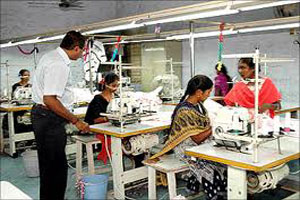
Textile exporters hit hard as euro tumbles
YarnsandFibers News Bureau 2015-03-13 17:00:00 – TirupurBusinesses close to home and individual textile exporters in Tirupur, Tamil Nadu, who have sizeable exposure to the currency, have been hit hard after the recent drop in the currency’s exchange rates.
The euro tumbled against the dollar — falling 3.6 cents — after the strong US jobs data released last week. With the euro at 1.06 to the dollar, the market is bracing for the currency reaching parity with the dollar — that would mean a further fall.
Concerns about the Euro zone economy are not new, but the currency’s sudden plunge in December 2014 and now has caught the textile merchants unawares. The euro that was trading at around ₹85 last year slipped slowly to around ₹75 levels by early December. This shake-up was quite sudden, though there were signals that there may be trouble brewing.
According to Murali Rajagopalan, Director of Kalynda Financial Advisory, there was reluctance to hedge euro exposure, especially after the short rally in mid-December when the exchange rate went close to ₹80.
But the currency nose-dived in a month to a low of ₹68 in late January 2015. This is a 20 per cent drop from the levels seen last year. So, if an exporter was expecting €300,000, rather than the ₹2.4 crore he would have got last year, the money he would receive now will be ₹30 lakh less. There has not been much respite since, as the euro held at 70-71 levels in January and February before the recent rout.
Rajagopalan however, notes that the suddenness of the currency’s movement and the subsequent losses suffered are creating more awareness on currency hedging. In the past, textile exporters were not willing to do any risk management. Full currency hedging was not seen as a way to protect the cash situation of the business.
Hedging by making use of pre-shipment credit in foreign currency (PCFC) has been popular in the last two-three years. PCFC provides a natural hedge and the cost of borrowing is also lower. Interest rates on rupee credit are around 12 percent compared with 2.5-3 percent over Libor rates for foreign currency credit. With Libor rates hovering near zero, borrowing in dollar or euro is much cheaper, said Raja Shanmugham, an exporter and Chairman of CII, Tirupur.
Garment prices are only revised once in every few years and due to heavy global competition, sellers are not in a position to negotiate better deals. So the already wafer-thin margins have eroded further with weak euro as it lowers margin for manufacturers.
Market Intelligence
Ask for free sample Report

experience
Customer Base
dedicated team
Countries Served Worldwide









